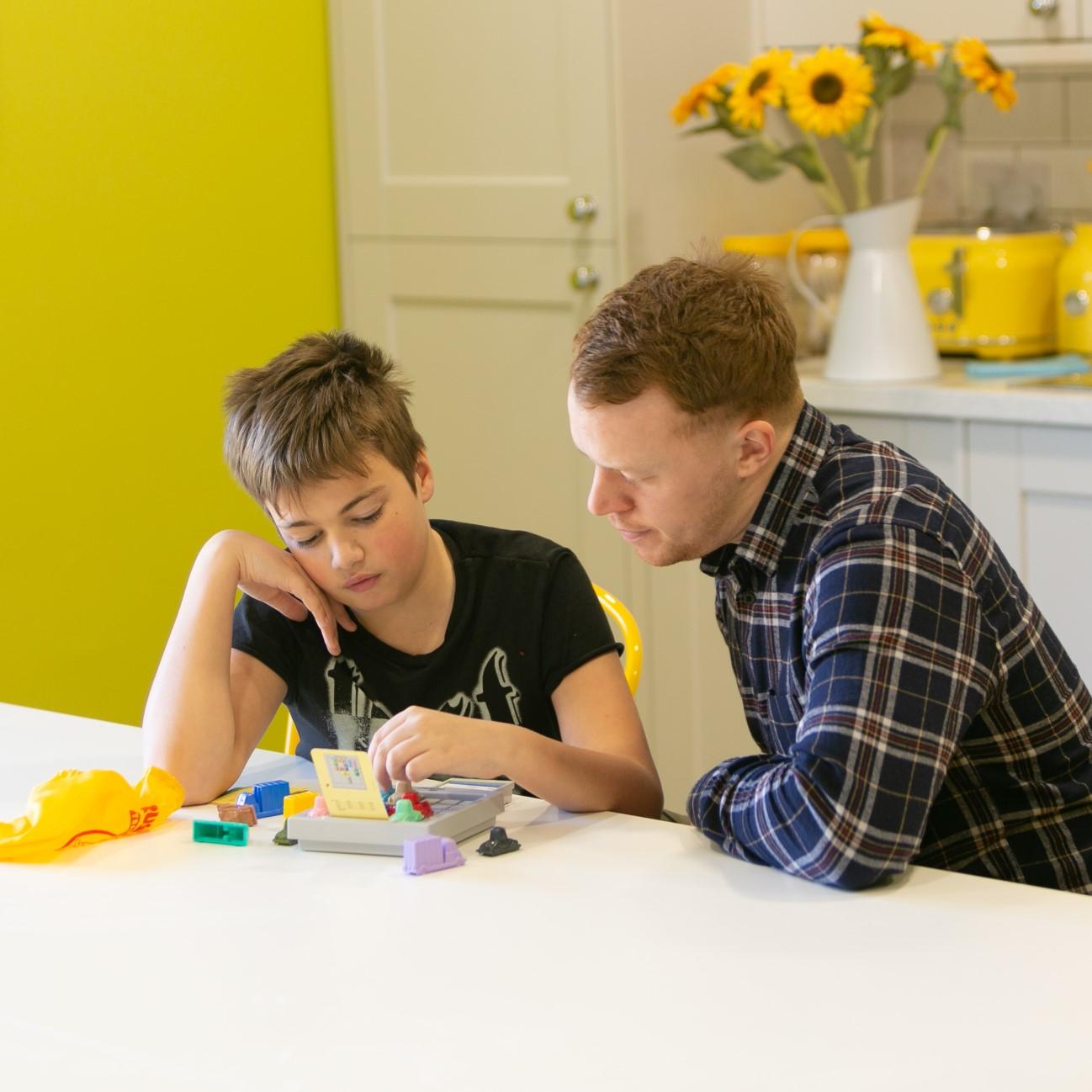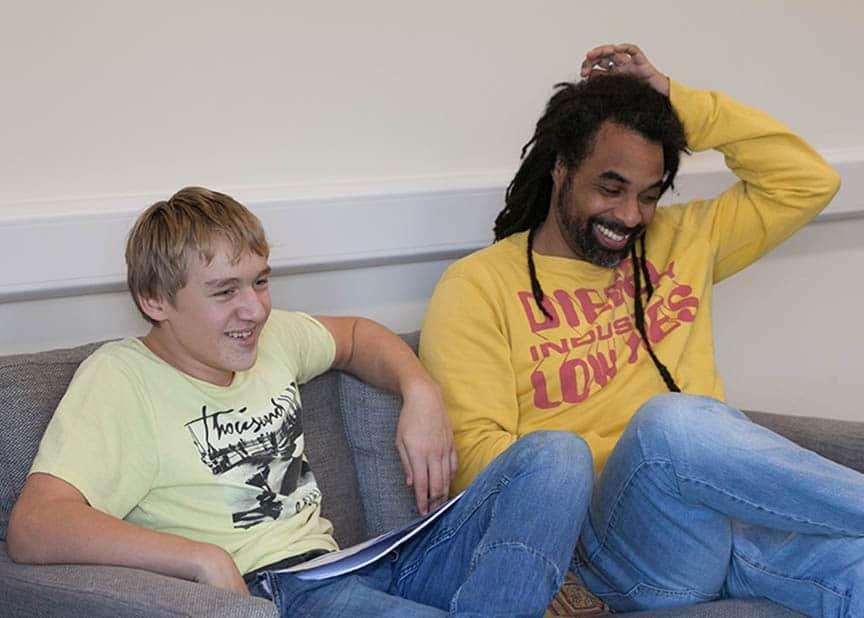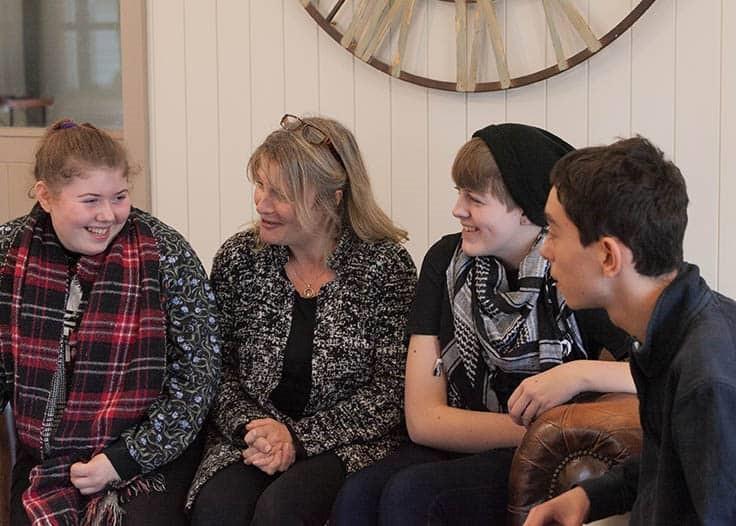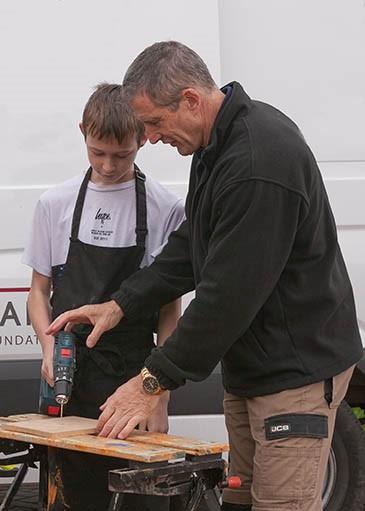
10 minute read
Introduction
Introduction This needs writing!
Fagus was developed to help monitor progress and set goals. However, Fagus users sometimes ask us what they should do in response to a certain profile or a developmental need that Fagus has helped identify. In response to these questions, we have created a brief guide that offers xyz
We hope you find this information useful and helps you use Fagus effectively with your children.
This document etc etc etc
Essential foundations
The chart contained within this document describes a wide range of approaches that can be intelligently used with children who have
social, emotional and mental health needs. By that we mean that their use must be informed by assessment, planned carefully and actively
reviewed.
Reviewis the first step in planning what to do next. It informs teacher’s and teaching assistant’s decisions and practice. None of the
approaches we have described will work to their full effect without the child’s experience being one of minute by minute good practice. This
serves as a foundation on which all other work is built. Without this foundation many interventions will not work at all and some will make
the situation worse by adding to the child’s confusion and uncertainty.
So, what does social, emotional and mental health good practice look like in classrooms and playgrounds? We have organised our points
into four areas:
Unconditional Positive Regard
Authority
Excellent Teaching
Teamwork

Unconditional Positive Regard


Unconditional Positive Regard
Unconditional Positive Regard (UPR) guides all your interactions with all the children you work with.
When we maintain UPR we make assumptions. We assume that the child is doing the best they can in the circumstances they have been placed, usually circumstances that the child has had little say in. We assume that the child would prefer to make their lives easier and would not intentionally set out to make our lives more difficult. When things go wrong, we recognise gaps in skills and experience rather than negative intention.
When we hold a view that a child’s behaviour is “naughty” or “difficult” we bias ourselves to both notice these behaviours and interpret what the child does in the light of our existing attitude to them. Unconditional Positive Regard shapes the way we interpret behaviour. It biases us to notice when the child gets things right. It allows us to interpret

a situation more openly and neutrally. The child may well have responded angrily but, with a UPR stance we can factor in the impact of, for example, the bullying the child had to cope with before their angry outburst. Perhaps their behaviour was reasonable in an unreasonable situation.
UPR influences our behaviour and language toward the child. When our assumptions are positive our communication becomes warm, sincere and aspirational. We convey to the child that we believe in them, we are confident they will progress, and we value their presence. This builds value into their relationship with adults and promotes the child’s sense of belonging to the community that is their class and school. These are motivating factors for pro-social behaviour.

Adult behaviours that communicate UPR
Compartmentalise: put to one side all the challenges and adversities of your own life so that you can focus on your work
Be organised and readyfor the school day. Show the children you care about them by being prepared to teach them
Greet children in the morning. Welcome them back into your classroom
Be presentand available
Engage in sensitive and warm interactions with pupils
Remember that humans communicate more non-verbally than verbally. Consider your posture, expression, and tone of voice
Lookand listen carefully to the child’s words and behaviour
Help the child to know you have heard them by acknowledging what they said
Communicate to children that you value them as a person (“I’ve enjoyed teaching you this morning. We’ve learned a lot”)
Even though you may not be able to solve everything, you can reassure the child that you will supportthem through their day
Take each child’s needs into account when giving praise. Not all children can accept direct praise. Be discreetwhen necessary to
have the biggest possible impact

Model the behaviour you expect of the children you work with. The ability to notice and copy others’ behaviour contributes to human
social competence and integration. It is impossible to stop children copying what they see and hear around them. What we can do is
influence what they see and hear. Be calm in your interactions
Reassure children that you keep them in mind even when they are not present
Make clear your positive regard and your belief in the child’s potential
for growth and learning (“Your writing today was excellent. Tomorrow
you could use some even better vocabulary when we re-draft.”)




Authority
Authority
Authority, as distinct from aggression or anger, is essential if adults are to maintain control and provide support for children in
schools and classrooms.
Authority is entirely compatible with a relational approach to children. It allows clear thinking, effective teaching and a thoughtful response
to children’s needs.
While authority is not in itself, control, it conveys control. Authority creates the space in which adults can be flexible in their response and
make clear decisions. We take it for granted now that children require a differentiated learning experience to bridge from where their learning
currently is to where the teacher would like their learning to be at the end of a lesson. Similarly, children require a differentiated response to
how they behave in class. Children are not helped by a one size fits all approach, but they are helped by a sense that adults are in control.
Adults are often concerned that this is unfair or that other children will notice different reactions to a child’s behaviour and take advantage of it.
In fact, children know who finds life at school easy and difficult and they can understand adult efforts to make things fair. They recognise that
a lift in a school addresses one inequality for a wheel-chair user and, sometimes with the help of an explanation, understand why different
people need different means of access. Adults may need to explain why they have different expectations of different children butwill generally
find that children will readily accept their approach. This becomes possible when all classroom practice is built on strong values which
consistently guide practice to make it appropriate for every child.

Adults need to maintain authority over themselves as well as those in their care. In this respect, authority is the process of ensuring the
influence of the conscious, cognitive brain is greater than that of unconscious or emotional thinking. Powerful emotions, such as anger or
shame undermine our capacity to think clearly and can trigger associations from experience which magnify negative thoughts and
feelings.
Authority involves:
Consistently held values which influence thought and action
Appropriate expectations, clearly conveyed to children
Maintaining a positive and respectful emotional tone when managing behaviour

Using reasoned persuasion rather than coercion or shouting
Excellent management of classroom processes (i.e. starting and finishing
lessons on time, fluent knowledge of procedure etc.)
A non-threatening and yet assertive presence in the classroom and school
Where necessary, sanctioning the behaviour, not the child and neverinducing shame
Confidence built on professional skills and knowledge



Excellent Teaching
Excellent Teaching
Excellent teaching is a vital part of provision that allows children to function well in classrooms.
Good teaching ensures that children build on existing skills and knowledge at a rate that is appropriate to them. When children have a
secure grasp of the skills and knowledge required to meet the learning objective, they can approach the lesson confidently, in the belief that
they will succeed. Their experiences in the lesson tell them that they are a successful learner and so adds to their confidence. Children who
are taught well are more likely to be motivated.
Skilled teaching includes knowing about each child’s learning and matching the lesson to all the children. Challenge that is too great is
demotivating because the child recognises that their efforts will not bear fruit. Why even start to climb Everest if you know you cannot reach
the top? When children believe the task is matched to their capability, they are much more likely to attempt it. When children are successful,
they often receive positive feedback. This enhances their motivation to attempt activities because of the inherent emotional rewards of the
task (satisfaction/ enjoyment/ fun).
Children who experience great teaching become conscious of their progress. Their awareness of their growth builds self-efficacy,
confidence and autonomy. The child learns that they have positive agency over their learning, and this contributes to positive self-esteem.

Excellent Teaching Key Points
Children must be emotionally regulated before they can learn
Know the children you are teaching and avoid triggers for emotional distress
Plan for day to day variation within children as well as child to child variation. Children who have had
adverse experiences are vulnerable to tiring stress and interrupted sleep.
Build children’s confidence by ensuring they experience success as well as challenge
Plan for group work carefully. Some children are unwilling or uncomfortable to show others what

they can and can-not do
Create a learning environment that is suitable for all the children (generally quiet, calm, safe,



Teamwork
Teamwork
School staff are most effective when they are part of a wider organisation with shared responsibility for the care and education of
children.
Primary teachers can lead and guide the various professionals who work with the children in their class as a conductor might guide an
orchestra. A key player in many classrooms is the Teaching Assistant. There may also be cover teachers, teachers who specialise in a
subject, PE staff and volunteer visitors who come in to help. Children benefit when these adults work together in harmony.
Although teamwork in secondary school is perhaps more complicated, it is no less important. There is an even greater need for the “lead
player” to communicate and promote communication between all involved to build cohesive practice.
The potential to build teams extends beyond the school gate. Building early, strong links with a focus children’s families is an investment.
Involving families in the school team that supports the child (as opposed to them being a separate team working in parallel) does not imply,
for example, asking a parent to do some of the school’s job. Just as teachers should not have to sanction a child for misbehaviour at home,
parents and children are not helped by being asked to punish children who have broken school rules.

Being members of the same team involves sharing information and ideas, listening to each other, agreeing what direction you want to go
in, and then pulling together in that direction. The values that underpin a school’s work with children can also effectively guide the work
schools and parents do together.





